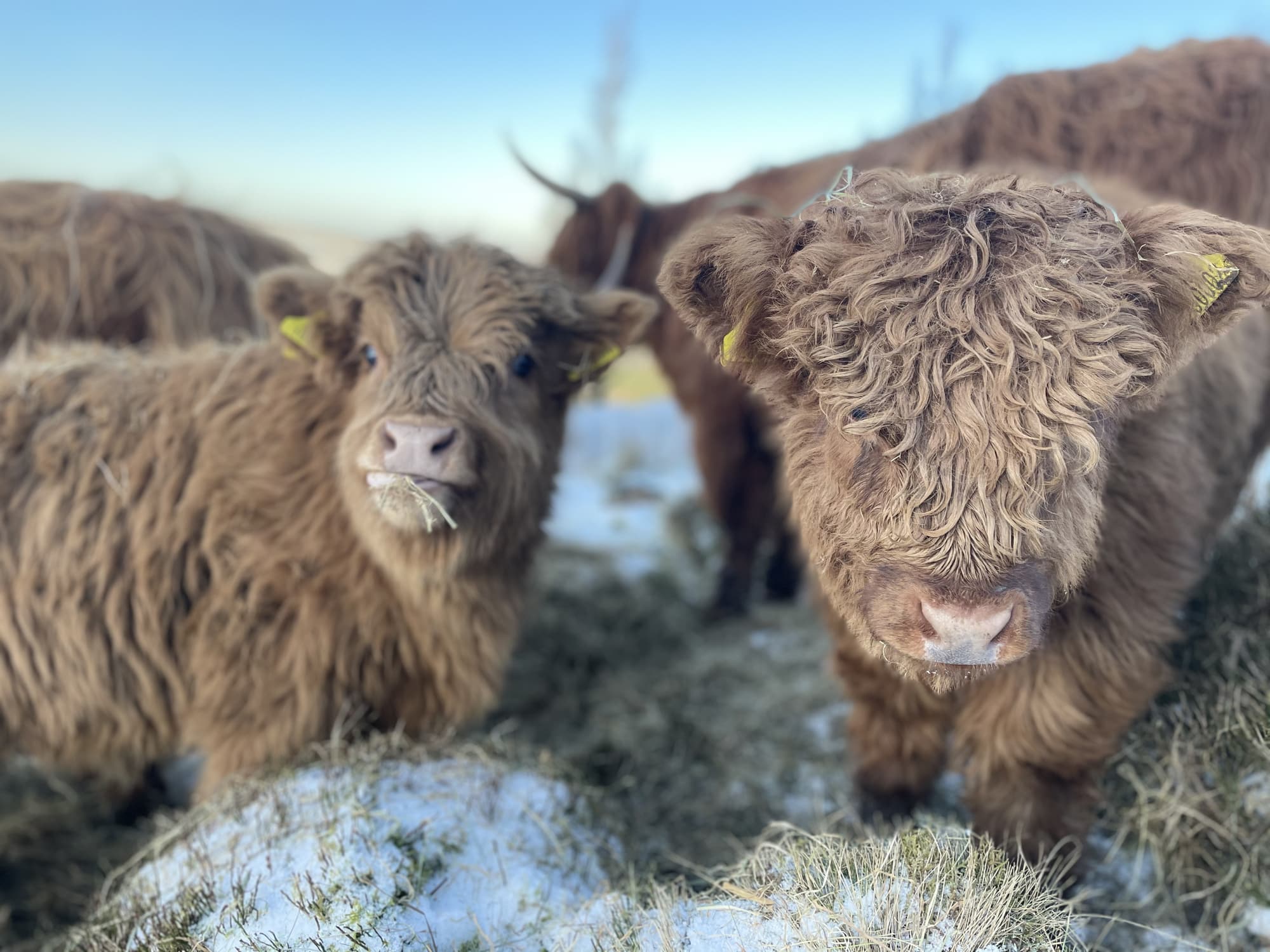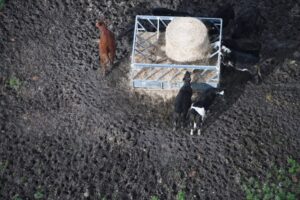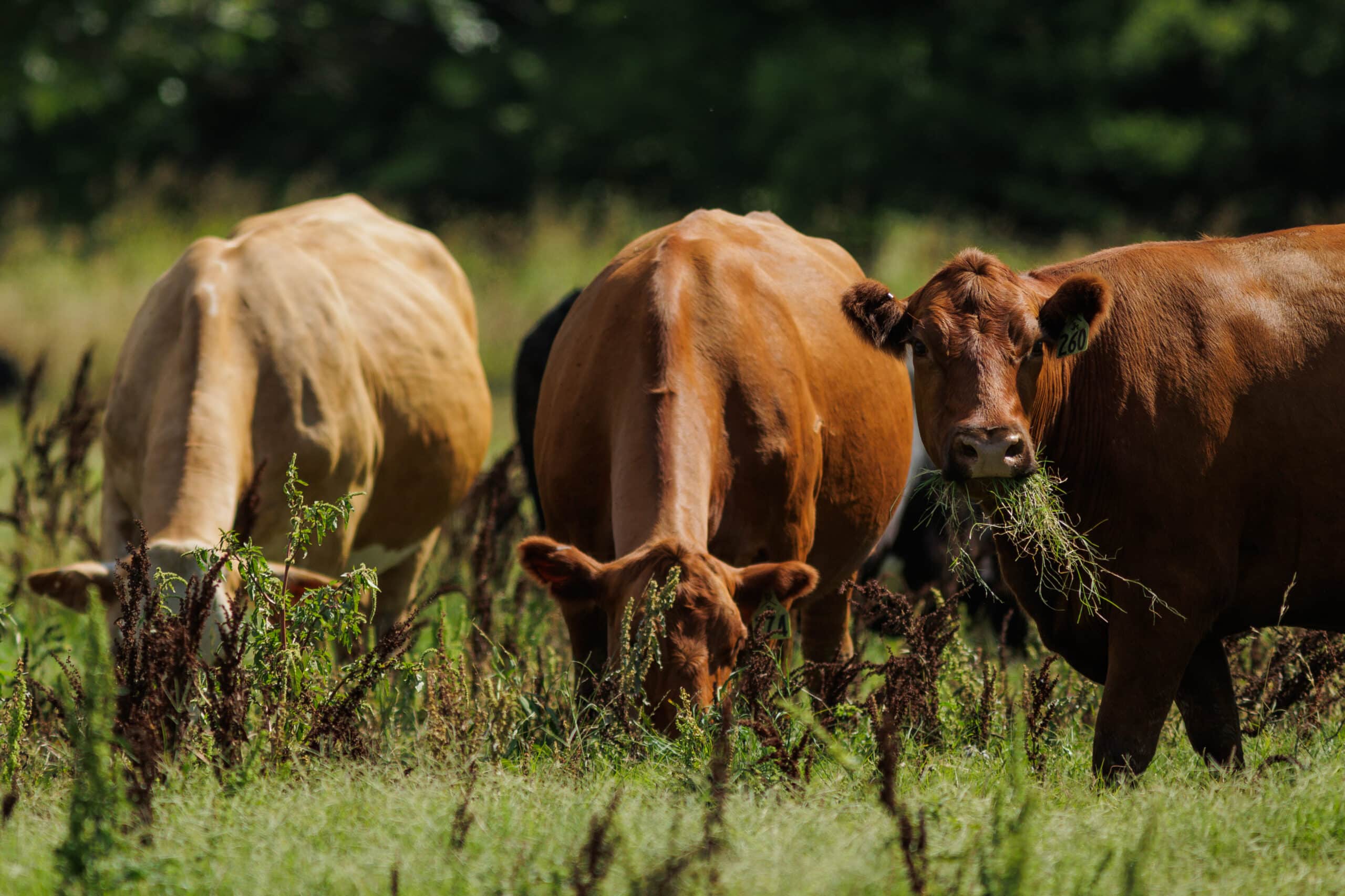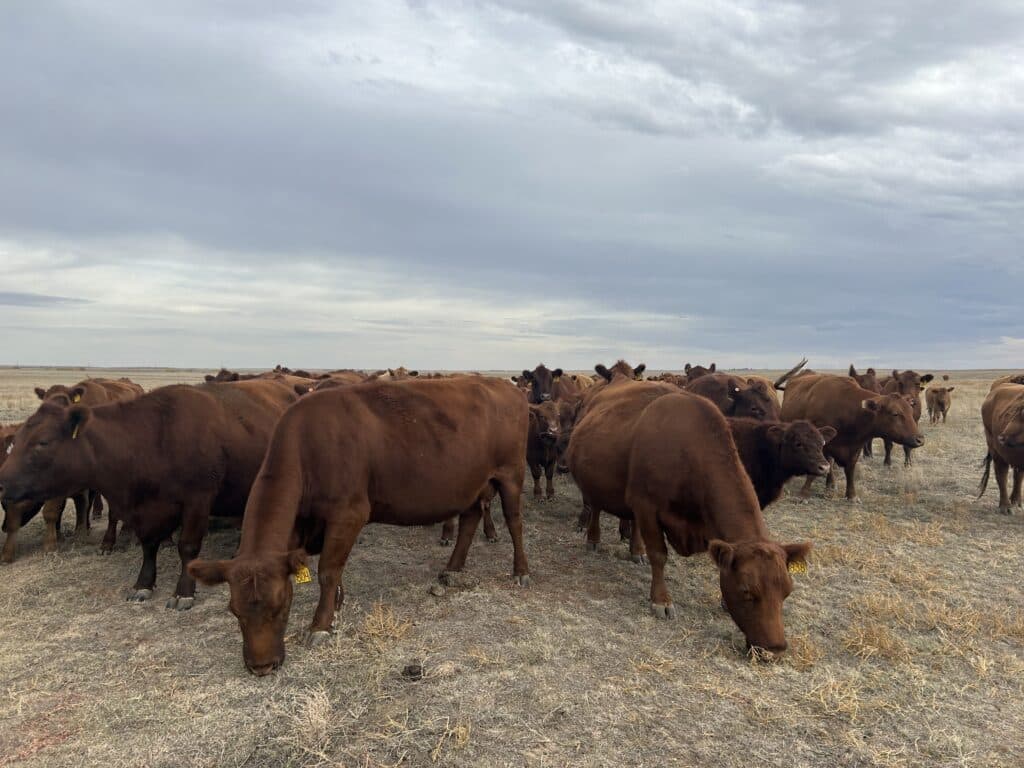Outwintering: an option in a changing environment

What is outwintering?
Outwintering is the practice of keeping livestock outside in the fields for all or most of the winter months. Some suggest it is damaging to the soil with cattle crowding around a ring feeder covered in mud. However, a different approach to outwintering can be far more beneficial than detrimental and can provide significant savings for the farmer.

How can outwintering be implemented successfully?
On one of FAI’s farms in Oxfordshire, a regenerative farming approach to rearing cattle has been implemented with one of the biggest changes being outwintering the animals. The following has proven effective.
-
- Fields are divided into pens, and fenced off using mobile electric wire. One-hundred and sixty pens are created for 160 days, each 0.5 hectares in size. Hay bales are placed in each pen in preparation for the winter.
-
- Typically, livestock under 300kg require 3% of their body weight in dry matter per day, those over 300kg require 2.5%. FAI calculates a 75% utilisation of the available forage, therefore 25% of their requirements is made up from the hay bales.
-
- When the cattle are moved into a cell, the round hay bales are rolled out across the ground. This spreads the hay allowing all cattle access and reducing poaching and damage to pasture which is typical when using ring feeders. Up to 25% of the bale is trodden into the ground, increasing carbon content and seeding for the following spring.
What are the benefits to outwintering?
If done correctly, then outwintering can save in time and money, and can improve animal welfare and job satisfaction.
Research has shown that outwintering livestock can increase carcass growth, decrease hoof and leg problems, allow a wider range of natural behaviours and reduce aggression.
Without the need to house livestock, the FAI farm saved £134.24 per day, £24,163 over the 2021 year (1). By outwintering cattle, farmers save on bedding, feeding and mucking out. Outwintering some livestock can free up shed space for other animals such as those that are calving or lambing. Feed costs can be 20-30% lower when outwintering. Moreover, you can reduce tractor usage and labour. From a job satisfaction point of view, farmers have said that moving the cattle from one pen to the next each morning is far more enjoyable than driving up and down a dark shed twice a day in the tractor.
Farmland and pasture can become more productive and diverse too. Soil nutrition can improve with outwintering both from manure and trampled hay. Bare patches, a symbol of overgrazed grassland, rapidly reduce and plant diversity increases.

What are the challenges with outwintering?
Although you can reduce labour requirements, outwintering is by no means a labour-free alternative to housing livestock. The challenges with outwintering livestock come with the planning and preparation.
Using mobile electric fencing to create the pens gives you the most flexibility and is relatively cheap but does require an upfront additional cost. It is important to be able to change stocking rates in response to weather fluctuations and so moving cattle quickly and efficiently is important. Investing in mobile water troughs can be the simplest way to allow livestock access to clean water, but this doesn’t come without its costs.
Animals should have a good body condition score before outwintering. Old or thin animals will likely struggle outdoors in winter. They have greater exposure to endoparasites such as lung worm and liver fluke. Routinely checking for these in faeces is important to provide timely treatment.
What about lameness and mineral deficiencies?
It is also more difficult to spot lameness when cattle are outwintered compared to housed. Keeping a close eye on performance is key to spotting problems early on. You should have a contingency plan in place for animals that are losing condition score or for adverse weather conditions such as snow which makes grazing difficult. Bringing livestock indoors or using ‘sacrifice fields’ until they have recovered or the weather has improved could be considered.
Similarly, if there is the likelihood of mineral deficiencies on your land consider using a bolus. Farmers using a forage crop such as brassica should introduce livestock to it slowly (over 10-15 days) and on a full stomach to avoid digestive upsets. Although kale is a high-quality feed, cattle are at risk from iodine deficiency and you need to take this into account.
Shelter needs to be accessible for livestock often in the form of hedgerows, trees or banks. You can even use stacked bales in open fields.
Which livestock can be outwintered?
Most cattle and sheep can be outwintered. Dry, suckler and young dairystock cattle can be outwintered as long as feed requirements are met. Monitor these monthly to ensure they are suitable for the age, growth, stage of production and weather conditions. Heifers may require an additional 10-20% of feed.
What are the best conditions for outwintering?
Ideally land should be gently sloping with sandy soil and good drainage. Despite this, clay soils and floodplains can be used if managed correctly. Outwintering cattle in areas prone to flooding earlier in winter can avoid damage to the ground. Also ensuring there is a good stockpile of forage by preventing grazing in that area from the start of August will help maintain soil structure over the winter.
Leaving grass buffer strips around the fields will help to reduce water run-off, having good access with solid tracks prevents soil damage, and using fields that are positioned away from watercourses reduces the risk of flooding.
How can you measure the success of outwintering?
You can monitor by weighing and condition scoring cattle every 2-4 weeks. Keeping a close eye on forage crops as well is important to ensure there is sufficient feed for the livestock. Monitoring the forage crop weekly can help achieve this. AHDB have a video demonstrating how to calculate your forage crop’s dry matter yield per hectare.
When considering all winter costs, farmers can make significant savings by outwintering their livestock. If managed successfully, the long-term benefits come from improved fertility of the land requiring less reseeding and fertiliser in subsequent years.
Want to use AgriWebb to monitor your grazing strategy?
AgriWebb can help with both grazing planning and feed budgeting. Find out more here or speak to us.


